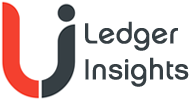Last week the French and Italian securities regulators AMF and CONSOB proposed changes to the DLT Pilot Regime in order to attract more participants. The legislation which eases certain regulations for distributed ledger technology market infrastructures was enacted in mid-2022 and became effective in April 2023. Yet so far only two projects have been approved – CSD Prague for settlement, and 21X as a combined exchange and settlement venue. No licenses have been granted so far by AMF or CONSOB.
21X is a good example of several of the rules that were relaxed, in that it allows a single entity to manage both the trading and post trade infrastructure. The new on-chain exchange operates on a permissionless blockchain, even if the participants require permissions. Retail investors can participate directly, without going through a broker, although compensation has to be offered if something goes wrong. Additionally, for settlement purposes 21X uses stablecoins or in European regulatory lingo, electronic money tokens (EMTs). This requires the waiving of certain rules regarding finality of settlement.
Proposed DLT Pilot Regime changes
First off, the regulators propose ‘greater proportionality’ based on the scale of the project. Because it’s a kind of sandbox, the regime sets activity limits which the larger infrastructures consider too small to be worthwhile. A Deutsche Börse group executive compared it to adapting an aircraft carrier to land a Cessna, but only for one or two landings.
The DLT Pilot Regime also competes with the UK’s Digital Securities Sandbox (DSS), which explicitly adapts the trading limits to the scale of the organization. That said, the DSS had the benefit of going second and the organizers were aware of the objections to the DLT Pilot Regime. The French and Italian regulators suggest that ESMA should be able to adapt the limits.
Larger entities initially were wary of the short term nature of the DLT Pilot Regime, so AMF and CONSOB propose extending the duration and also clarifying the exit process.
Settlement assets
They also say that the use of electronic money tokens (EMTs) and tokenized deposits could be authorized more widely. They added that at the same time they’d like to see the rapid support for a central bank money settlement solution (which the European Central Bank has announced). 21X has been authorized to use EMTs, but perhaps the regulators are saying projects shouldn’t let the availability of the ideal settlement instrument hold up matters.
The regulators suggest expanding the range of assets supported to include structured bonds and some derivatives.
They wish to develop common EU standards for interoperability with legacy systems, and would like to see the benefits of DLT promoted to both issuers and investors.
A few of these suggestions were previously made by AMF in a paper about tokenization and CSDs. At that time it suggested that an institution should not need a license as a CSD to qualify for a DLT Pilot Regime settlement license.
“At a time when Europe wishes to develop its financial markets to meet its financing needs with the Savings and Investment Union, it is clearly a priority that Europe puts in place a competitive framework to encourage innovation, and market testing of distributed ledger technology, in order to better measure the potential benefits,” said Marie-Anne Barbat-Layani, AMF Chair and Paolo Savona, CONSOB Chair.






